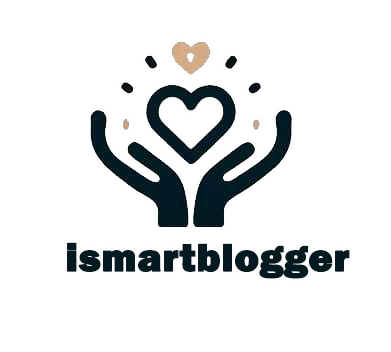Boost Wellness with Singing: Vocal Techniques in Music Therapy
Explore the healing power of song in our comprehensive guide on singing for health, delving into vocal techniques used in music therapy.
Introduction: Unveiling the Power of Song
The human voice is an instrument accessible to all, capable of evoking profound emotion and fostering deep connection. Its power extends beyond performance into the realm of therapeutic, where it can become a tool for healing and personal growth.
This brings us to explore one fundamental aspect of therapy that amalgamates music and health – Music Therapy. In this era where traditional healing practices are being re-evaluated, alternative methodologies such as music therapy have received increased recognition.
With an emphasis on the role singing plays in health and wellness, this article examines how vocal techniques used in music therapy contribute to physical, mental, and emotional well-being. As we journey through this exploration, we will look at the scientific evidence supporting singing as a therapeutic tool; study different vocal techniques employed in music therapy; hear stories from real-life cases where singing has made substantial differences; before finally delving into more specialized applications within the field.

Defining Music Therapy: A Melodious Journey Towards Wellness
Music therapy is an evidence-based clinical use of musical interventions by certified professionals to support individuals’ cognitive functioning, motor skills, emotional development, social skills or quality of life. Rooted in purposeful application rather than mere passive listening or participation, it provides avenues for communication that can be helpful to those who find it hard expressing themselves through words.
The efficacy of music therapy lies within its ability to tap into multiple dimensions simultaneously – physicality (through rhythm), intellectuality (through melody), emotions (through harmony), and sociability (through shared musical experience). Each session is tailored towards individual needs using various aspects such as creating tunes, singing songs or moving to beats – providing a comprehensive platform for healing.
Pertinently so among these techniques stands out one universal method transcending cultures, epochs and geographical boundaries – singing. The power of vocal expression is harnessed in music therapy to bring about therapeutic changes, a topic we shall further expound upon as we proceed.
A Brief Sojourn Through the History of Music Therapy
The therapeutic use of music traces back to ancient civilizations, wherein Greek philosophers like Plato and Aristotle considered music as a powerful instrument for emotional healing and character development. Biblical references to King David’s harp soothing King Saul’s troubling spirit is another classic example. However, it was only after World War II when community musicians visited veterans’ hospitals around the United States that the profession began its formal journey.
Seeing patients’ physical and emotional responses led doctors and nurses to request hiring musicians by the hospitals. This ensued systematic study into the benefits of music that eventually birthed our modern understanding of music therapy.
Over time, research expanded into diverse applications ranging from mental health to child development and geriatric care. Moving ahead from being merely an ‘entertainment’ during tough times, today music therapy stands recognized as a validated healthcare profession with international bodies like American Music Therapy Association (AMTA) setting guidelines for professional practice.
The Role of Singing in Health & Wellness: Harmonizing Body & Mind
Singing is not just an artistic expression but also a physical exercise that promotes respiratory health, improves posture and stimulates overall well-being. Moreover, it provides an outlet for emotional expression often leading to cathartic release fostering inner peace – thus playing a pivotal role in maintaining holistic wellness. From lullabies soothing infants into sleep, choirs creating harmonious communities or even solo performances boosting self-esteem – singing has been integrated into human lives since time immemorial.
It’s no surprise then that this universal language forms an integral part of therapeutic interventions in music therapy. The interplay between rhythm, melody and emotion in song allows therapists to tap into individuals’ psyche in an intrinsically human way.
Singing can produce profound transformations – whether it be bringing joy to the heart, lifting depressive moods or evoking tears that cleanse the soul. Hence, singing is not just an act but a journey towards wellness, one note at a time.
The Science Behind Singing for Health: Unleashing the Healing Power of Melody
An Eloquent Symphony of the Brain: The Neurological Impact of Song
Singing, in its manifold forms, serenades not only our ears but also our brains. When we sing, it stimulates an orchestra of neural activity that can be likened to an eloquent symphony.
The release of endorphins and oxytocin in response to singing creates a potent cocktail for mood enhancement. Endorphins are nature’s analgesics, they suppress pain and induce feelings of pleasure or euphoria.
Oxytocin, on the other hand, is often dubbed as the ‘bonding hormone.’ It enhances feelings of trust and bonding, making us feel more connected to others. The effects on stress levels and the immune system are also noteworthy when discussing singing’s brain-based benefits.
Research has shown that cortisol – a stress hormone – decreases during singing sessions. Moreover, several studies have suggested that singing can enhance immunological response, indicating a possible strengthening effect on our immune system.
Physical Odyssey Through Song: A Body’s Resonance with Music
Beyond mental wellness and emotional wellbeing lurk physical benefits associated with singing that are often sung in softer tones. One such benefit is improved lung function and thereby better cardiovascular health because deep controlled breathing requires strong use of lungs which over time strengthens them. Posture improvement alongside muscle toning in various areas like abdomen or back transforms into a consequence rather than an objective when indulged in song rendering process; it happens naturally without conscious effort put towards it.
Vocal Techniques Used in Music Therapy: Crafting Wellness through Sound
Breathing Life into Therapy: Harnessing Breath Control for Healing
At the heart of therapeutic singing lies diaphragmatic breathing – deep inhalation that allows maximum intake of oxygen and controlled exhalation, which helps the body and mind to relax. These techniques are frequently used in meditation and mindfulness practices, underlining their significance in fostering tranquility and focus.
The Art of Vocal Warm-ups: Preparing Body and Mind for Therapy
In musical therapy, vocal warm-ups are not merely a prelude to the main performance. They serve as a therapeutic tool in themselves. Humming, lip trills, tongue rolls; these seemingly simple exercises can relieve tension in the vocal cords and foster relaxation.
Advanced Applications & Specialized Areas within Music Therapy Using Vocals: Pushing Boundaries with Harmonies
Neurologic Music Therapy (NMT): Singing Back to Speech
One groundbreaking area where singing is making profound strides is neurologic music therapy (NMT), particularly for speech rehabilitation following neurological disorders like stroke or brain injury. The power of song extends far beyond mere entertainment or artistic expression.
It’s an unassuming yet potent force for health enhancement encompassing physical, mental and emotional spheres of wellness redefining boundaries of therapies with its soulful melodies. As research continues to unveil more benefits linked to singing and music therapy at large, there’s an optimistic future ahead full of harmonious healing potential.





